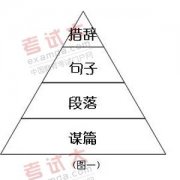A History of Christmas
Christmas is the most cheerful and holy of holidays in the Christian world, which boasts of an estimated 1.8 billion people. Although the origin of this holiday was purely religious, it has evolved into a highly secular(长期的,世俗的) celebration each year. However, strong religious components are still conveyed in various ways each year. The two are intrinsically(本质上的,完全的) mixed in the midst of modern commercialism(商业主义) and attached to.
Christmas day fall on December 25th each year, celebrating the birth of Jesus Christ, the son of a carpenter living over two thousand years ago. Christianity(基督教), the movement following the teachings of Christ, roused the world over the next many centuries. It is said that the first celebration of Christmas took place in 336 A.D. in Ancient Rome. No one seems to know for sure if December 25th was actually the date of Christ’s birth, but it is possible that Christian leaders in Ancient Rome wanted to replace pagan(异教的) religious holidays that occurred around the same time.
Many secular symbols of Christmas have emerged over several centuries. Santa Claus, in his present form, is a fairly recent development whereas his origin, in part, goes back to Roman times.
St. Nicholas was an early Christian Bishop (主教) of Patara of the Lycian seaport (in present-day Turkey) in the 4th century A.D. The Roman Emperor Diocletian, who persecuted Christians, imprisoned(监禁,关押) him because the practice of Christianity was illegal. The first Christian Emperor of Rome, Constantine, later released him. Nicholas’ reputation for generosity(慷慨,大方), kindness and miracles earned him a widespread reputation and eventually sainthood(圣徒). He is said to have brought back life to the children who had been chopped into pieces by their butcher father. He is reputed to have placed some gold coins in stockings, hung by a fire to dry by three poor girls. He had hoped that the girls would be able to use the money to marry to avoid living on prostitution(卖淫), the common destiny(命运) of such girls at that time. From this gesture came the tradition of empty oversize(特大的) stockings hanging on fireplaces at Christmas time for Santa to fill with little gifts. From these roots, the present-day Santa Claus seems to have emerged.
In some European countries, the image of Father Christmas is identified more closely with Saint Nicholas than with Santa Claus. The red and white suit, that Santa wears, is said to have come from the traditional color of early Christian Bishops’ robes. Santa, flying in a sleigh(雪橇) pulled by reindeer(驯鹿), and going down chimneys, originated(起源) from an American poem written in the 1820’s, another American made an engraving(雕刻术) called “Santa’s Workshop” in which Santa, is portrayed(描绘,描写) in a lovely sunset, scratching his chin, reading letters and checking a list activities which was revived(复苏,苏醒) every year in music and stories told to children during the yuletide(圣诞季节) (Christmas) season. Every year children write letters to Santa Claus before Christmas, asking him to bring favorite toys.
Santa traditionally navigates(航海) the frosty night skies December 24th without using a compass or a chart to plot his course. He, in his sleigh pulled by nine reindeer, usually lands on slippery sloped roofs. Clumsily(笨拙的), with his big bag heaped with toys and slung(用带吊挂) over his shoulder, he jumps down chimney and dumps toys under Christmas trees. Gifts often include a doll for a little girl or a train for a little boy. He does all of this without disturbing the inhabitants. Santa then crawls vertically back up the chimneys and, without a trace, flies off, exclaiming the resounding phrase, “Merry Christmas to all, good night”. He is back at his home at the North Pole before dawn on Christmas morning, tired but very happy after his very speedy sweep around the world. After a big yawn, Santa falls asleep.
Christmas carols(圣诞颂歌), or Christmas religious songs, began in the middle Ages when people danced and sang religious songs on village greens (central gathering areas in small towns and villages) in Anglo-Saxon England. A Christmas carol today is a religious tune without the dance associated with it.
A strong religious tradition today, as in other times, is to go to church at midnight of Christmas Eve or on Christmas morning. A priest may say mass (in a Catholic[天主教的] Church) or preach(宣讲教义) a sermon(布道) about the significance of the birth of Christ.
Another very prominent symbol of Christmas is the Christmas tree. There are several explanations for its origin. One story suggests that Martin Luther was walking through a wood on a clear winter night admiring the beauty of the bright stars glowing through the branches of trees. He decided to cut down a small evergreen tree and take it home. He put candles in it to represent the stars he had seen earlier because he wanted to share that beautiful image with his family.
Another story tells of the bringing of an evergreen tree inside the home during winter solstice(至日,至点) (December 21st) symbolizing the renewal(复活,复兴) of life in the dead of winter. It became associated with Christmas, which occurs only four days later. The Christmas tree was firmly established as a Christmas symbol by the Germans who eventually brought it to America. In Victorian England, people hung cakes and candies on it and later, fruit made of paper adorned(装饰) the branches. Modern commercial tree decorations appeared in the 1880’s at Woolworth’s Department Store in the United States, and electric Christmas tree lights made their debut(初次登场) in 1882.
The first Christmas cards were sent in the 1840’s in both England and America. Gift giving probably stems from the Bible where it is written that three kings, bearing gifts from the Orient(东方), visited Bethlehem when Jesus was born. We know that St. Nicholas also gave gifts. A later tradition developed, whereby gifts were given on each of the twelve days of Christmas, from December 25th, when Jesus allegedly(据说,传说) was born, to January 6th, when Jesus was apparently baptized(洗涤,实行浸礼) (the Epiphany). There is a popular song called the “Twelve Days of Christmas” that keeps this tradition alive each year.
We understand that Macy’s Department Store in New York City introduced the annual Christmas or Santa Claus Parade during the 1880’s. Today, in late November, or early December, a Christmas Parade is held in almost every city and town in Europe and America.
Early on the night before Christmas (Christmas Eve), children are encouraged to go to bed early if they expect Santa to come. They lay their heads on their pillows with visions of what the next day will bring. Santa is invisible to children since no one has actually seen him, his sleigh, or reindeer on Christmas Eve.
On Christmas Day, families usually get together for a roast goose or turkey(火鸡) dinner served with mashed(压碎的) potatoes, gravy(肉汁), cranberry sauce, and pie or pudding(一种甜点心) for dessert. Grown-ups will pour a glass or two of wine or other spirits(烈酒). Together, families will openly exchange gifts and gratitude. Children, including cousins, nieces and nephews, often kneel on the floor in front of the tree, excitedly trying to find presents with their names on them. On that day, warm receptions are extended to everyone, friend or stranger.
For many merchants, Christmas has become the economic boom season of the year. It is estimated that a major percentage of the annual yield of revenue from sales is generated during the month or more of intense Christmas shopping before Christmas. As a matter of fact, there has been some debate for years that Christmas has become too commercialized and that the true meaning of Christmas is gradually disappearing. An escalating(逐步上升的) tendency has been to buy more and more expensive gifts each year. Some people go into debt, sometimes owing more than they can easily pay back. Some people are personally beginning to rethink(反思) this commercial approach to Christmas. However, toy manufacturers and their contemporaries in advertising make a killing during this period. Christmas shopping hits a peak(最高点,顶峰) on Boxing Day, the day after Christmas, when stores offer great discounts to unload the unsold Christmas merchandise(商品). This is usually the busiest shopping day of the year.
Christmas has spread far and wide across the globe. My wife and I lived in Beijing last year. During the Christmas season, we saw many Christmas decorations and heard a lot of western Christmas music in department stores. It seemed little different from Toronto, Canada. We celebrated Christmas much as we would have in Canada, except that we weren’t with our families in our homes during that very special family-oriented holiday season. We have great memories of Christmases of the past and look forward to many more great Christmas memories in the future.
圣诞节的历史
圣诞节是号称有大约18亿教徒里的基督教世界里最愉快、最神圣的节日。尽管这个节日的起因纯粹是宗教性的,但它已演变成了每年的非常世俗化的庆祝活动。不守,纯粹宗教性的部分每年还是在以各种方式进行着。二者在现代重商主义中,很自然地融合在一起。
圣诞节时值每年的12月25日,是耶稣基督的诞生庆典,他是两千多年前的一个木匠的儿子。基督教,这场追随基督教义的运动,在接下来的几个世纪里影响了全世界。据说,圣诞节的第一次庆祝活动是在公元336年的古罗马举行的。好像没有人能肯定12月25日就是基督的实际诞生日,而更有可能的是,古罗马的基督教领导人想要以此取代几乎同时举行的异教徒的宗教节日。
圣诞节的很多世俗象征已经出现好几个世纪了。现在这种形象的圣诞老人,可以说是最近才出现的。然而,他的起源却可以部分追溯到古罗马时代。
圣·尼古拉斯是公元4世纪时利西亚海港的帕塔拉(在现今的土耳其)的一个早期的基督教主教。迫害基督教徒的罗马皇帝戴克里以非法宣扬基督教的罪名把他关进了监狱。后来,罗马的第一位信仰基督教的皇帝康士坦丁释放了他。尼古拉斯的慷慨、仁慈和圣迹为他赢得了广泛的声誉,最终被尊为圣徒。据说,他恢复了被他们那屠夫父亲砍成碎片的孩子们的生命。还说他在三个可怜女孩挂起来用火烘烤的长袜子里放了一些金币,希望这些女孩能用这些钱结婚,以免沦为妓女,而在那个时代,这种女孩的命运大多就是这样。在圣诞节,把特大号的空长袜挂在壁炉上面让圣诞老人放一些小礼物的传统,就来自这个故事。根据这些传说,现代的圣诞老人的形象似乎显现出来。
在一些欧洲国家,圣诞老人的形象更多的是与圣·尼古拉斯联系在一起,而不是与Santa Claus联系在一起。圣诞老人穿的红白相间的服装,据说是来自早期基督教主教的长袍的传统颜色。在驯鹿拉的雪橇上飞翔、从烟囱里下来的圣诞老人,源自 19世纪20年代克莱门特·摩尔写的一首美国诗“圣诞节的前夜”。19世纪60年代,另一个美国人制作了一幅版画,叫做“圣诞老人的作坊”,上面的圣诞老人被描绘成在美丽的落日余晖下,挠着下巴,读着信,检查一份清单(每年在圣诞节以音乐和故事的形式反复告诉孩子们的各种活动都列在这份清单上)。每年,孩子们在圣诞节之前给圣诞老人写信,请他带来他们最喜欢的玩具。
根据传说,圣诞老人在12月24日深夜,在寒冷的夜空飞翔,不用使用指南针或者地图来计划他的路线。他坐在由九头驯鹿拉着的雪橇上,在通常很滑的斜屋顶上降落。他笨拙地扛着一个装满玩具的大口袋,从烟囱里跳下来,把玩具倒在圣诞树下。礼品中常常有送给小女孩的一个洋娃娃,或送给小男孩的一辆小火车。他无声无息地做着这一切,然后垂直向上从烟囱里爬回去,不留一点痕迹,飞走时大声地说着那句人们熟知的话:“祝大家圣诞快乐,晚安”。在圣诞节清晨破晓之前,他回到在北极的家里。在全世界快速飞奔了一夜,很疲倦却非常愉快。打了一个大呵欠后,圣诞老人就睡着了。
圣诞节颂歌,也叫基督教宗教歌曲,始于中世纪时期。那时,在盎格鲁撒克逊人的英格兰,人们在乡村草地上(小镇或村庄的聚集中心)跳舞,唱宗教歌曲。今天的圣诞节颂歌只是一道宗教曲子,没有与之相配合的舞蹈。
今天的一项强烈的宗教传统,像其他时期一样,是在圣诞节前夕午夜或圣诞节早晨去教堂做礼拜。牧师可能作弥撒(在天主教堂)或者布道宣讲救世主诞生的重要性。
圣诞节另一个显著的象征是圣诞树。关于它的起源有好几种说法。有一个故事说,在一个清冷的冬季夜晚,马丁路德走过一个树林,十分惊羡明亮的星光洒过树枝的美丽。他决定砍下一棵常青树带回家。他在树上放上蜡烛代替他看到过的星星,因为他想与家人一起分享那美丽的景色。
另一个故事讲的是,在冬至(12月21日)这一天,把一棵常青树搬回家,象征着在死寂的冬天生命的复苏。把它与圣诞节联系在一起,只因刚好四天之后便是圣诞节。德国人把圣诞树确立为一种圣诞节的象征,后来又将之带到了美国。在维多利亚女王时期的英格兰,人们把蛋糕和糖果挂在树上,以后,又用纸做的水果装饰树枝。现在商店卖的圣诞树装饰品出现在19世纪80年代美国的伍尔沃斯百货商店,而圣诞树上装彩灯则始于1882年。
第一批圣诞贺卡是19世纪40年代在英格兰和美国寄出的。赠送礼物可能源于《圣经》,里面写到,耶稣诞生时三个国王带着礼物从东方来访问伯利恒。我们知道圣·尼古拉斯也送礼物。后来发展起来的传统是在圣诞节的12天里,从声称耶稣诞生的12月25日,到耶稣公开受洗礼的1月6日(主显节),每天都送礼。有一首叫做“圣诞节的12天”的流行歌曲,使每年的这种传统保持下来。
我们知道,每年的圣诞节或圣诞老人游行是在19世纪80年代,由纽约市的梅西百货公司引入的。如今,在11月底或12月初,圣诞节游行几乎在欧美的每个城镇举行。
圣诞节前的晚上(圣诞节前夕),孩子们被鼓励说,如果他们希望圣诞老人来的话,就要早些上床睡觉。他们把头放到枕头上时,就在幻想第二天会带来什么东西。在圣诞节前夕,孩子们是看不见圣诞老人的,因为实际上没有人看见过他、他的雪橇以及他的驯鹿。
在圣诞节,一家人通常聚在一起吃烤鹅或者烤火鸡,还有土豆泥、肉汤、酸果沙司和作为餐末甜点的馅饼或布丁。大众们会倒上一、两杯葡萄酒或其他烈酒。聚到一起时,家人们公开地交换礼物和表达感谢之情。孩子们,包括堂、表兄弟姐妹,侄儿、侄女,外甥、外甥女,常常跪在树前的地板上,兴奋地寻找上面定有他们名字的礼物。那天每一个人都会受到热情接待,不管是朋友还是陌生人。
对于很多商人来说,圣诞节成了一年中生意电繁荣的时节。据估计,全年销售收入的很大一部分,来自在圣诞节前圣诞大采购的一个多月里。实际上,已经争论多年的话题是,圣诞节太商业化了,而其真正意义在逐渐消失。一个日益明显的倾向是每年要买越来越多的贵重礼物。有些人已经私下开始反思这种圣诞节的商业行为了。玩具制造商及其广告业的同伙们,在这个期间大大地赚了一笔。圣诞采购在圣诞节后的一天即节礼日达到高峰,这个时候商店大打折扣,倾销没有卖完的圣诞商品。通常,这是一年中最忙的采购日。
圣诞节在全球广泛传播开来。去年,我和妻子住在北京时,在圣诞节期间,我们在百货商店里看到了很多圣诞节装饰品,听到了许多西方圣诞音乐。与加拿大多伦多几乎没什么区别。除了不是和我们的家人在一起,我们就像是在加拿大一样,庆祝了圣诞节。在我们家乡,这个季节是一个特别适合全家一起过的节日。我们对过去的圣诞节还有很深刻的印象,也盼望将来有更多值得回忆的圣诞节。






